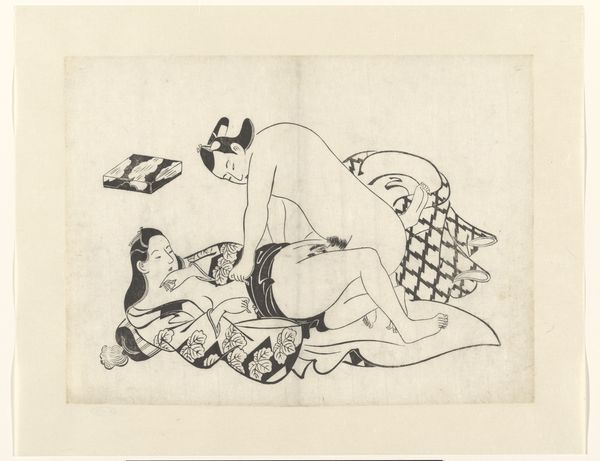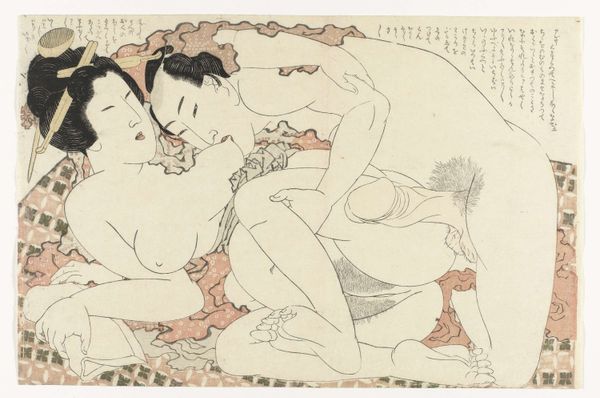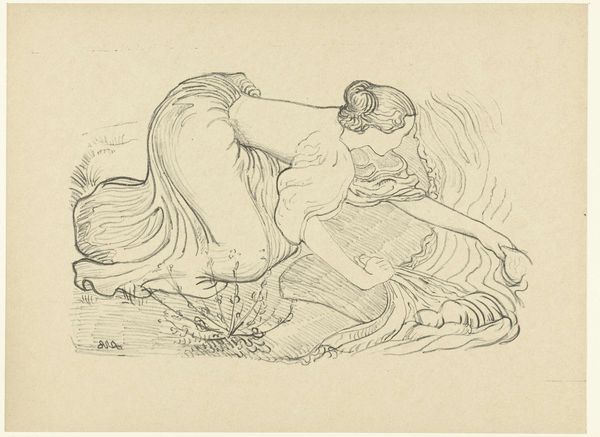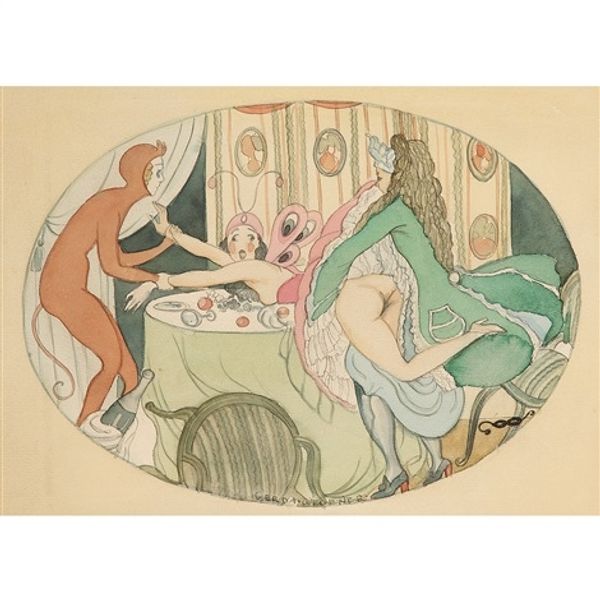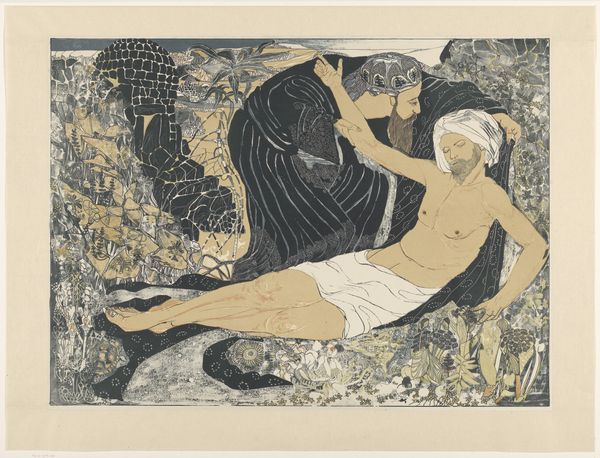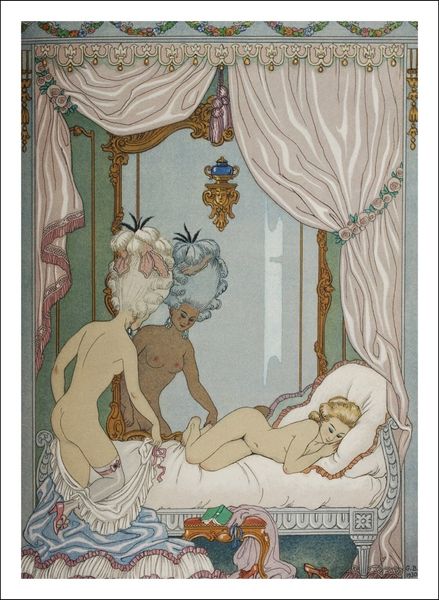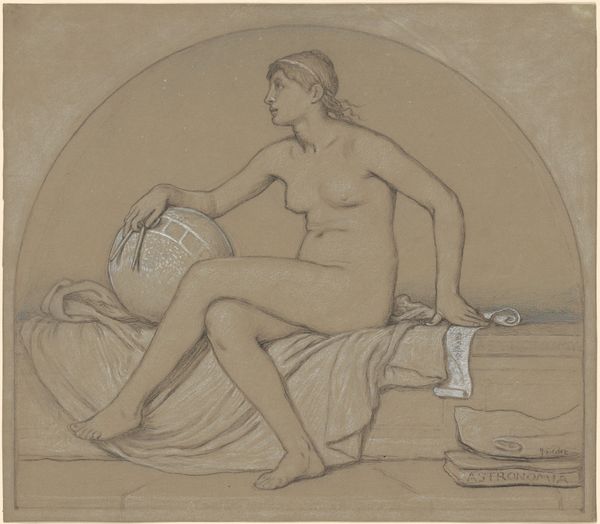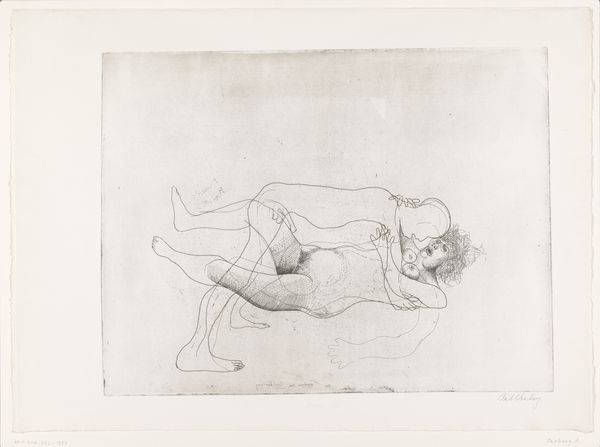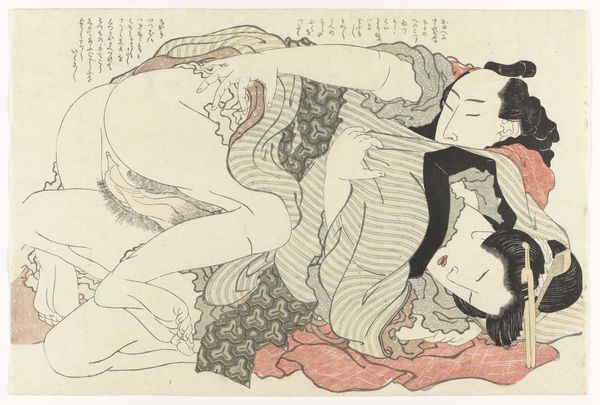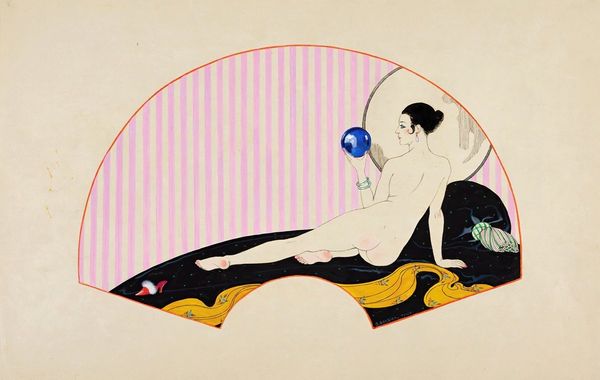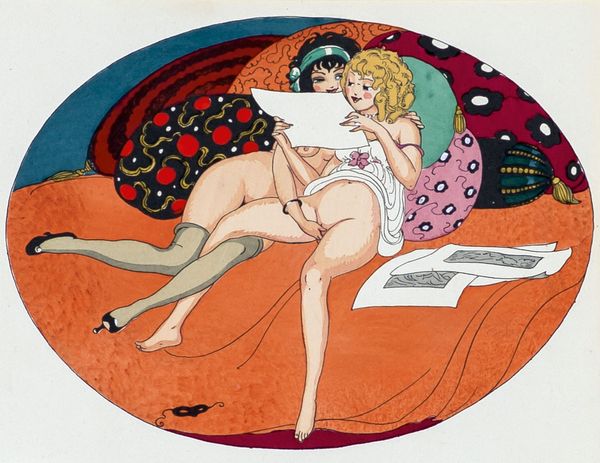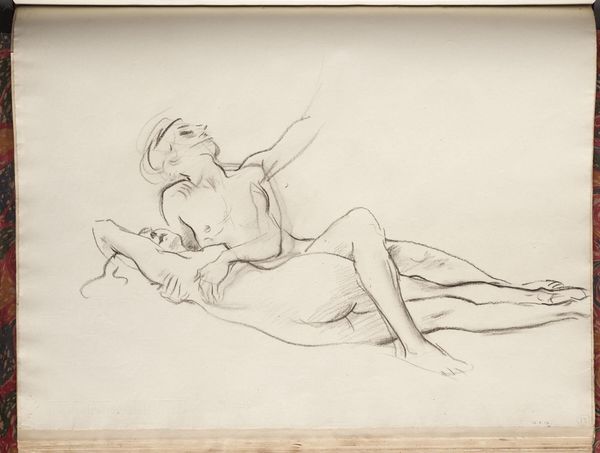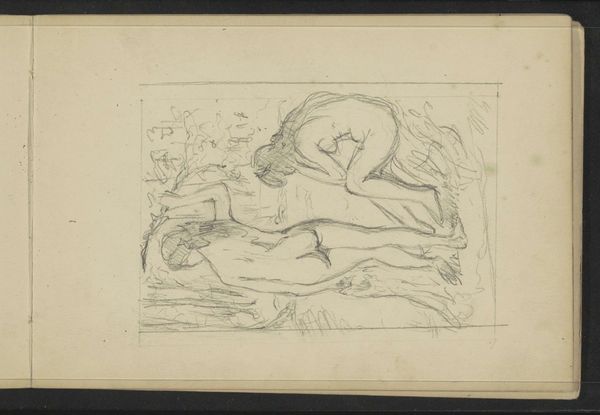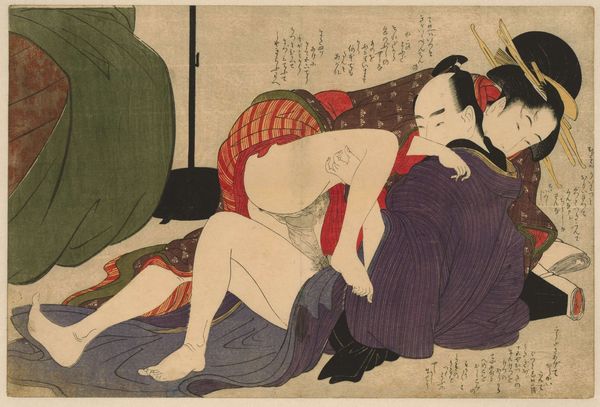
Copyright: Public domain
Curator: What a delightful little reverie! This watercolor by Gerda Wegener is entitled "Les Délassements D'Éros," created in 1925. What are your first impressions? Editor: It feels playful and dreamlike. The way she uses the watercolor almost washes out the scene, making it feel less explicit and more like a cheeky daydream. There's definitely a sly humor to it. Curator: Precisely! Wegener had such a wicked sense of humor. She often used mythological imagery to playfully subvert societal expectations around sexuality. That reclining figure, for instance – part man, part goat – that's a faun, right out of classical mythology. The woman looming over him is harder to pin down though. Editor: The grapevines overhead and her pose definitely evoke the imagery of Dionysus and his bacchanalian rituals, although with her hair piled neatly, and an unreadable gaze focused to the skies she doesn’t embody frenzy so much as, say, well…determination. I suppose it hints at desire unbound by mortal restraints. Curator: I read that determination as impatience, even! The title hints at "Eros's Relaxations," but there's such tension in that arched back and her upturned face. It's almost as if she's saying, "Alright, let's get on with it!" which for 1925 feels quite radical. She’s not objectified but very much in charge. Editor: Absolutely. And the fact that it’s rendered in watercolor, so light and airy, takes away any heaviness that the subject matter might imply. She's cleverly using this delicate medium to make a bold statement. It seems, at its core, a clever commentary on gender roles. A nudge at the assumed passivity of women in both art and life. The soft, whimsical style serves as a vehicle to communicate deeper, complex themes about gender, sexuality, and freedom of expression. Curator: And don't forget, Wegener herself lived a life that defied conventions! A reminder that art isn't just about what's on the canvas; it's often a reflection of the artist's own story. Editor: A beautifully succinct point. It invites us to think differently, both about Wegener's time and about our own. A small picture packing quite a punch!
Comments
No comments
Be the first to comment and join the conversation on the ultimate creative platform.
